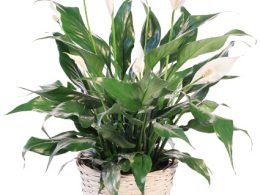Introduction to Composting
Are you looking for a way to reduce your household waste while also creating nutrient-rich soil for your garden? Look no further than composting! Not only is it an eco-friendly solution, but it’s also an easy and affordable DIY project. But with so many different composting methods out there – from bins to tumblers to worms – how do you know which one is right for you? In this blog post, we’ll explore the pros and cons of each method and help you find the perfect fit for your lifestyle and gardening needs. Let’s get started!
Bins
Bins are one of the most traditional and common methods for composting. They come in different sizes and materials, such as plastic, wood or metal. Bins work by allowing organic waste to decompose naturally with the help of air and moisture.
One of the advantages of bins is that they can be placed almost anywhere, including small spaces like balconies or patios. They also keep animals out while still letting air circulate through.
Another benefit is that they allow users to control the composting process more easily than other methods. With a bin, you can add new material on top while removing finished compost from the bottom.
However, bins may require some maintenance like turning over your pile occasionally or adding water if it gets too dry. It’s also important to have a balance between “green” (nitrogen-rich) and “brown” (carbon-rich) materials to produce high-quality compost.
Bins are an excellent option for those who want a simple but effective way to start composting at home without much hassle.
Tumblers
Tumblers are a great option for those who want to achieve composting more quickly. They work by rotating the contents inside, which helps speed up the decomposition process and ensures that all materials are evenly mixed.
One of the benefits of using tumblers is that they can be easily turned without any physical strain, making it an ideal choice for people with limited mobility or older gardeners. Additionally, because tumblers keep compost contained in one space, there’s less risk of pests and other critters getting into your pile.
Tumblers come in different sizes and styles, so you can choose one that suits your specific needs. Some have multiple chambers so you can continuously add new material while allowing existing material to decompose. Others may include special features such as ventilation systems to help aerate the compost.
When using a tumbler, it’s important to remember to regularly turn the contents inside so all materials have access to oxygen and moisture needed for proper decomposition. It’s also crucial not to overload your tumbler with too much material at once – this could slow down the process instead of speeding it up.
If you’re looking for a quick and easy way to produce nutrient-rich soil amendment, then a tumbler might be right for you!
Worms
Worms are a great addition to your composting arsenal. They break down organic matter quickly and efficiently, turning kitchen scraps and yard waste into nutrient-rich soil. But before you dive in, it’s important to understand the basics of worm composting.
Firstly, you need to choose the right type of worm for your compost bin – red wigglers are the most popular choice. These worms thrive in moist environments with plenty of food and oxygen, making them perfect for indoor or outdoor bins.
Next up is bedding – shredded newspaper, coconut coir or peat moss all work well as bedding material. This provides a comfortable environment for your worms and helps maintain moisture levels.
When feeding your worms, stick to fruits, vegetables and non-greasy food scraps. Avoid meat or dairy products as they can attract pests and cause unpleasant odors.
Be patient! It takes time for worms to break down organic matter into usable compost. With proper care and maintenance though, you’ll soon have rich soil that’s perfect for growing plants both indoors and outside!
Which Method is Right for You?
When deciding which composting method is right for you, there are a few things to consider. Bins are great for those who have limited space and want an easy-to-use system that can be moved around as needed. They also work well for those who want to keep their compost contained and avoid pests.
Tumblers, on the other hand, are ideal for individuals or families with larger yards who want a faster composting process. While they take up more space than bins, tumblers allow for quicker decomposition and require less manual labor.
Worms might not be everyone’s first choice when it comes to composting methods, but they’re perfect for apartment dwellers or those without any outdoor space. Vermicomposting allows you to use your food scraps to create nutrient-rich soil in a small container with the help of worms.
Ultimately, the method you choose depends on your specific needs and preferences. Consider how much time and effort you’re willing to put into the process, as well as the amount of space available before making your decision.
Conclusion
After exploring different methods of composting, it is clear that each one has its own benefits and drawbacks. Bins are great for beginners and those with limited space, while tumblers offer a faster composting process. Worms may seem daunting at first, but they can produce the highest quality compost.
Consider your lifestyle and needs when choosing a method. Do you have time to tend to a bin or tumbler regularly? Is producing high-quality soil important to you? Are worms something you feel comfortable working with?
Regardless of which method you choose, getting started with composting is an excellent step towards reducing waste and improving your garden’s health. By turning food scraps, yard waste into nutrient-rich soil amendment instead of sending them off to landfills where they release methane gas as they decompose.
So go ahead and start making use out of what would otherwise be wasted material! Choose the right method for your situation and enjoy the benefits that come from creating healthier soil through DIY composting methods!











